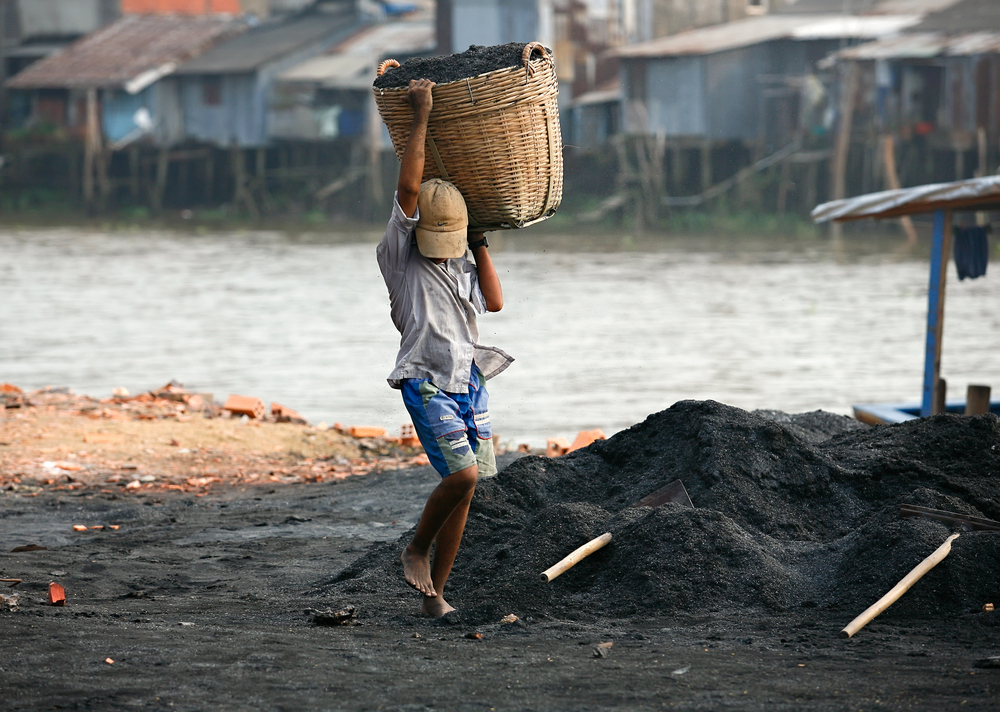Breaking
5,091 children child laborers no more — DOLE
MANILA — Labor and Employment Secretary Rosalinda Dimapilis-Baldoz yesterday said there are now 53 certified child labor-free barangays in the country under the Cabinet Cluster convergence program, H.E.L.P. M.E., which provides interventions and monitors the government’s anti-child labor efforts.
H.E.L.P. M.E. is an acronym for Health, Education, Livelihood, and Prevention, Protection, and Prosecution; and Monitoring and Evaluation.
“There are 23 more barangays that have been declared as child labor-free as a result of intensified efforts to liberate barangays with high incidence of child labor and make them child labor-free by 2016,” said Baldoz, citing the report of Director Ahma Charisma Satumba of the DOLE’s Bureau of Workers with Special Concerns.
“This brings to 53 the number of child labor-free barangays under the program and the number of children who are no longer child laborers to 5,091,” she added.
Satumba, in her report, also said 231 barangays have been upgraded from “continuing” to “low-hanging fruits”, and 283 “new-frontier barangays have been upgraded to “continuing”.
Under the H.E.L.P. M.E. program, barangays evaluated as “new frontier” are those which have not yet received interventions on the prevention and elimination of child labor, while “continuing” barangays are those where there are initiatives, interventions, or services already being provided, but which need enhancements to achieve the goal. “Low hanging fruits” barangays are those where services and programs are already in place and have been mobilized, but these need to be sustained and continuously monitored.
Satumba also said in her report that 96 barangays under the H.E.L.P. M.E. program have now Barangay Child Protection Committees; six barangays have enacted anti-child labor ordinances; eight barangays have enacted anti-child labor resolutions; two towns have approved municipal anti-child labor resolutions; and one city, Quezon City, has issued an anti-child labor executive order. In Region 4-A and Region 7, the BWSC has initiated the formulation and adoption of Voluntary Codes of Conduct on the Elimination of Child Labor in the Sugar Industry.
The 23 new barangays declared as child labor-free are as follows:
National Capital Region—Brgy. 155 (Bagong Barrio) and Brgy. 176 (Bagong Silang) in Caloocan; Brgy. Almanza Uno in Las Pinas; Brgys. 91, 107, 109, and 410 in Sampaloc and Brgy. 649 (Baseco) in Manila; Brgy. 201 in Villamor Airbase, Pasay City; and Bgry. Pasong Putik Proper in Quezon City.
Cordillera Administrative Region—Brgys. Pide, Ague, Fidelisan, Banga-an, Tanulong, and Madongo in Sagada, Mt. Province.
Region 3—Brgy. Pulong Buhangin, Sta. Maria, Bulacan and Brgy. Pandacaqui in Mexico, Pampanga. Region 4-A—Brgy. San Rafael, Rodriguez and Brgy. Sta. Ines, Tanay, Rizal; and Brgy. Sta. Maria, Calauag, Quezon. Region 4-B—Brgy. Libas, Buenavista, Marinduque.
Baldoz, who had visited most of these barangays during the last two years, said the DOLE, through its regional offices, has undertaken various initiatives that contributed greatly to the elimination of child labor in these barangays leading to their being declared child-labor free, among these, strengthening its partnerships with local government units, particularly at the barangay level; delivery of livelihood assistance to the parents of child laborers; provision of education materials and school supplies for the children; and conduct of job fairs.
The campaign for child labor-free barangays, launched in 2012, seeks to contribute to the vision of a Child Labor-Free Philiipines and to influence change and obtain commitment and support from various stakeholders.
Relative to this, Baldoz issued on 15 December 2014 Administrative Order No.
657 the Guidelines on the Certification of Child Labor-Free Barangay, containing the criteria for the selection of child labor-free barangay, documentary requirements, certification process, incentives and benefits, and grounds for de-certification, among others.
“This certification requires a tripartite validation process,” she said.
A barangay, to be certified a labor-free, must meet the following criteria: (1) has a profile of children in the barangay, including child laborers, regularly maintained and updated; (2) parents of child laborers freed from child labor have expressed commitment not to engage their children in child labor; heads of schools to monitor school attendance of children; and barangay officials to support child labor campaign; (3) barangay has enacted and implements an ordinance or resolution against child labor and immediately acts upon reported child labor incidents; (4) child laborers have access to health and education and their parents to livelihood opportunities; (5) presence of a functional BCPC or Barangay Council for the Protection of Children; (6) inclusion of child labor protection agenda in the barangay development plan with a corresponding budget; (7) barangay has partnership with government and civil society organizations; (8) and barangay officials participate in child labor capacity-building activities.
“We will continuously exert efforts in efficiently and effectively delivering anti-child labor programs and interventions to identified barangays in accordance with the National Child Labor Program and through H.
E.L.P. M.E. to achieve our goal of eliminating child labor in our midst,” Baldoz finally said.






















